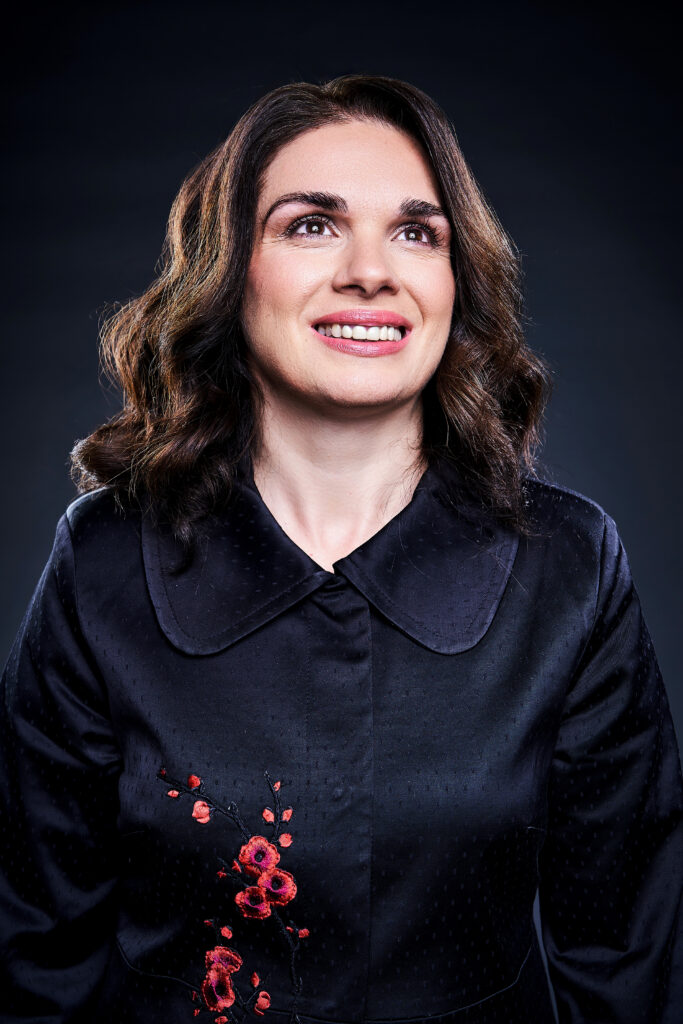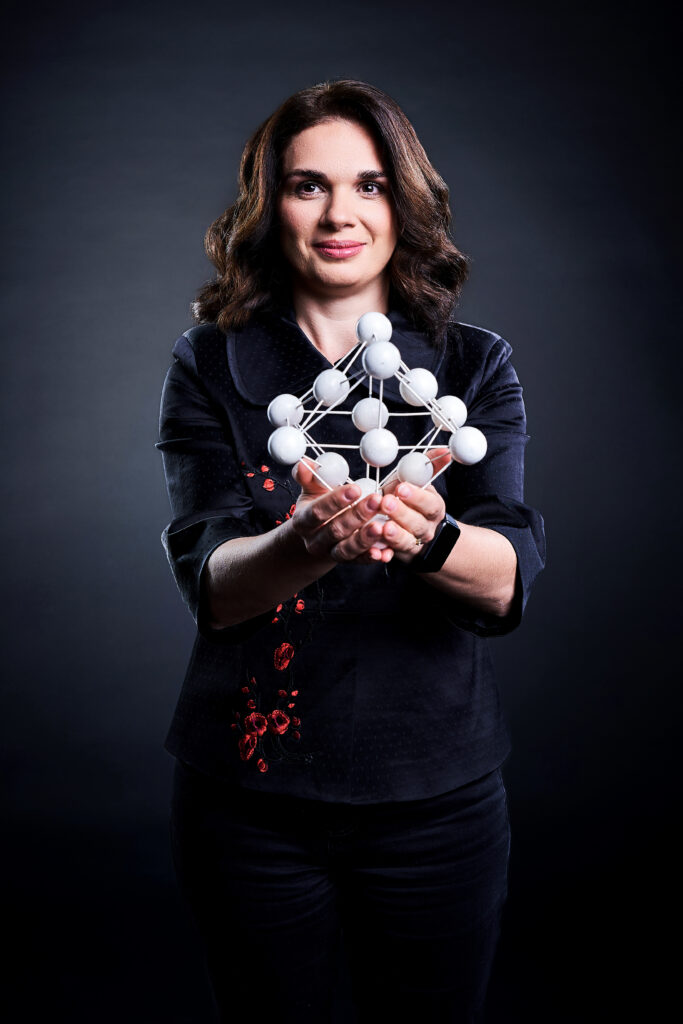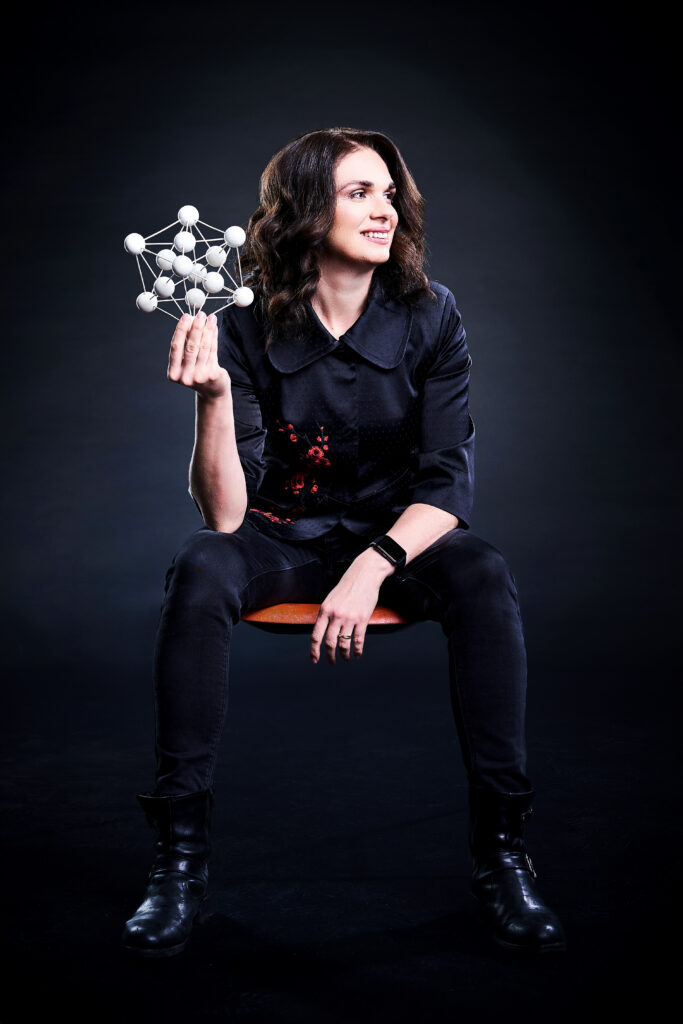Encouraging curiosity: insights into the unseen – Oana Cojocaru-Mirédin in Portrait

Have you ever been curious about why materials have certain properties? Or have you ever wondered what is going on at a level that is not normally visible? Professor Oana Cojocaru-Mirédin specialises in Atom Probe Tomography, a relatively new technique that allows us to understand the atomic composition of materials and how they are made up. It is particularly interesting because of the possibilities it unlocks for manipulating materials in the future. The technique reveals what used to be invisible even under the largest microscopes, making it possible to see what is happening at the smallest known level – the individual atom. This helps to explain the properties of materials – how they are structured and why they function the way they do (e.g. what makes iron hard and then bend under heat). It will also help to understand how they can best be modified to fit the needs of technical innovation for sustainable development.
Traditional ways of changing the properties of materials – trying things out and seeing what happens – can take a long time and may produce random results. However, improving the efficiency of batteries and renewable energy technologies has become a pressing issue and we are running out of time for „trial and error“. Using atom probe technology, it is possible to see in three dimensions what is happening at the atomic level and thereby understand why a material has the physical properties it does with new precision. Oana gives the following example: The accidental addition of an impurity to a solar panel doubled its efficiency by up to 20%. However, the scientists who did it were unable to work out exactly how this was happening. Hence, she went down to the level of atoms to seek answers. Atom probe technology can provide answers to such questions and can inform new design decisions to improve the efficiency of energy materials.
Oana’s story, of course, is a little bigger than an atom. Born in Romania, Oana completed her undergraduate and master’s degrees in France. She went on to do a PhD in physics. Experimental physics suited her preferences: spending time in the lab, interacting with people and solving problems together. She chose a laboratory that specialised in atom probe tomography, which gave her the opportunity to learn from scientists with a great deal of experience in the field and from the inventors of the technology. She was working as a post-doctoral researcher when she received a grant that enabled her to set up her own research team at the Max Planck Institute to study solar cells using these techniques. After only a few years of successful work and publications in this field, the RWTH Aachen University invited her to lead a team of researchers working on the atom probe characterisation method. They had acquired the technology but were now encountering difficulties using it, so they needed Oana’s expertise. It was there that she began working on a completely new subject: how to study the bonds between atoms with the help of atom probe and how that could help manipulate them towards more efficiency. In 2022, she was selected as the Chair of Cross-scale Material Characterisation at the Department of Sustainable Systems Engineering at the University of Freiburg (INATECH). Here she specialises in studying materials at the atomic level and redesigning them to make them more sustainable.
Just like her studying materials under extreme conditions, (APT requires vacuum, cryogenic temperatures and exposure to intense electric fields), Oana’s journey through academia is shaped by challenges that might have deterred most people. Yet, she not only succeeded, she also reckons that the experience of working in different cultures, countries and languages makes her a better scientist. It has helped her to build her own team and create an inclusive work environment. She feels comfortable in international spaces, which she experiences as more flexible and as a particular drive for the creation of knowledge and innovation. In an international environment, the limitations and biases of one’s own culture, which often go unnoticed (particularly in the natural sciences) yet can affect research success, are made evident. Being aware of them makes it easier to create an open space for inventive work and foster mutual understanding – quite literally. Oana speaks four languages every day – Romanian, French, German and English. She has found that each language also helps her to see things from different perspectives. She chooses English for teamwork because it allows all team members to be involved and enables direct, sometimes even frank, communication. This is particularly important in an environment of complex technical terms, different cultures and multilingualism, where clarity and simplicity of expression are essential for efficient collaboration. Of course, as a professor in Germany, Oana has to teach her research and methods in German, but after mastering technical terms in French that must feel like much less of a challenge. Nowadays, she reserves Romanian and French the time at home to talk with her daughter and husband.
Moving across borders and languages is more than a personal challenge for Oana; in her view, it also contributes to the advancement of knowledge. She believes that knowledge is not just information, of which there is an abundance today, but what you get when you transform information by filtering it through your own lens. Our understanding, which may differ from that of others, is encapsulated in the filters or what Oana calls our „own touch“. As she explains, „we have different facets of seeing and understanding things. When you put them together, you can get a richer picture, a more complete knowledge of both the challenges and the possibilities.” Thereby an intercultural environment can become a catalyst for the creation of new technologies through the synergy of different perspectives. That is what makes this environment so valuable, especially for researchers. In addition, Oana emphasises that in order to generate knowledge, it is also important to be humble, to be modest and to have „a lot of patience to process the information“.
She has faced other challenges in her scientific career. Oana grew up in an environment where she had no doubt that women had the same career opportunities as men. Oana believes that work is about self-development and that all career options should be open to you regardless of your gender. But more generally, she has found that since completing her doctorate and raising through the ranks, she has met fewer and fewer female colleagues. It is a very male-dominated culture, with a lot of toxic competition and rivalry. Oana shared that she has to deal with this regularly, but that she keeps going and carving out spaces of collaboration and a healthy strife. It also helps to talk about how this can be improved, and to work with people who are supportive of her work.
At the end of our interview, Oana showed me the collection of battery devices that she gathered to show to students. She encourages curiosity in the learning process and aims to reactivate that genuine interest in how things work and why they work the way they do we all had as children. Oana is convinced that curiosity and interest are key to successful research. They create an atmosphere of openness and inspire innovation. Her own journey demonstrates how exposing yourself to new techniques and environments beyond your comfort zone can yield new insights and impeccable results. It also resonates with her advice to keep doing what you are interested in no matter what: „Don’t close yourself off just because of others or because you are not like others. Follow your dreams.”


Portrait by Anna Tsedik
Anna studies Liberal Arts and Sciences at the University College Freiburg.